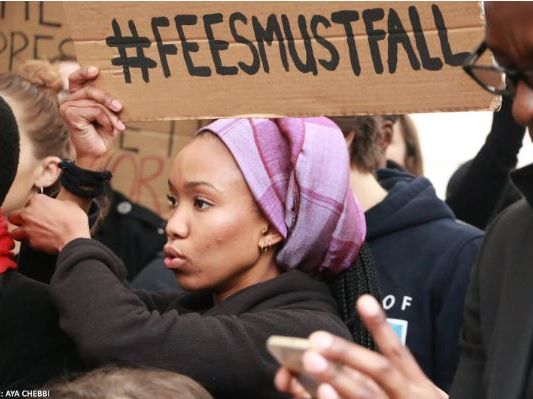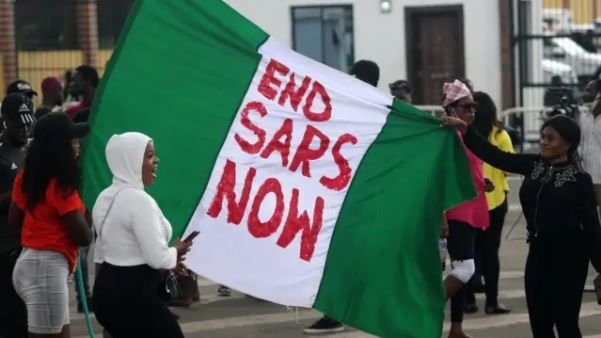CULTURE
A New Language of Resistance: How #hashtags are shaping a generation's fight for change
Protest in the streets or on the internet. How effective are hashtags for the new generation of activism?

On April 27, 2011, Freedom Day, South African President Jacob Zuma awarded legendary activist and photojournalist Sam Nzima a bronze National Order of Ikhamanga. It was both a somber and victorious moment for South Africans and long overdue. "I had so many awards in my life, but this will be very close to my heart--" he said in response to such a prestigious honor.
By then, Nzima was a grey-haired 77-year-old man who owned a village liquor store and lived in Mpumalanga, briefly serving as a local councilor. Nzima is known for capturing the moment 13-year-old Zolile Hector Peterson, wounded and fighting for his life, was carried by Mbuyisa Makhubo during the Soweto Uprising on June 16, 1976.
Due to the 1976 Soweto Uprising, which was a series of student-led protests in South Africa against the apartheid government's policy of imposing Afrikaans as the language of instruction in schools for Black students, June remains a significant month as the nation continues its efforts to heal from apartheid and celebrate the bravery and courage of the youth who protested against it.
While official estimates vary, it is generally believed that more than 500 students were killed during the uprising, including Zolile Hector Peterson.
"I didn't know who it was. I saw a child falling. I rushed there with my camera." Nzima recalled in a BBC interview in 2010
From Streets To #Hashtags: Protests in the Digital Age
From the Nikon F of 1976 to today's smartphone cameras, how we capture protests has transformed. Nearly four decades after the Soweto Uprising, images of students marching in Braamfontein, Johannesburg, for free education were broadcast instantly.
The movement became known as #FeesMustFall—a hashtag used over 289,000 times on X (formerly Twitter), as online activists joined those on the streets, echoing the past in a digital age.

The rise of youth-led digital activism, which highlights movements like #FeesMustFall and Nigeria's #EndSARS protests, used social media to spotlight violence and injustice, showing its power in shaping youth-centered conversations. However, a study by Delta State University in Nigeria found that while social media helped mobilize protesters and expose national issues, it also fuels panic and deepened divisions—especially on platforms like Facebook and Instagram, which amplifies ethnic, political, and social tensions.
The Rise Of Citizen Journalism
We are living in the age of one-click journalism, where news travels faster than ever and updates arrive within seconds. Information is now just a scroll away; the public can react in real time. This level of immediacy would have been unimaginable during the era of Sam Nzima. Journalists of his time were detained, silenced, or even exiled for doing their jobs. After the events of 1976, Nzima was placed under house arrest for 19 months. He lost his job and struggled to rebuild his life. In a later interview, he admitted, "I regretted it."
Today, digital and social media activism offers a powerful alternative. It enables freedom of expression and encourages citizen reporting. However, unlike traditional journalism, there are often few consequences for spreading false or misleading information. Writers aren't always held accountable for retractions or corrections, especially when misinformation aligns with a movement's immediate goals. This freedom has also widened the door for personal and group agendas to infiltrate activist spaces.
As digital activism becomes the new form of journalism and a powerful force for social change, the urgency to establish clear regulatory frameworks has never been greater. We're already seeing the rise of AI-generated videos impersonating political figures to push extremist narratives. The same tools that amplify marginalized voices can easily be weaponized without proper safeguards.
Yet, despite these challenges, we are undoubtedly witnessing a fascinating era. Movements like #FeesMustFall and #EndSARS have reignited youth engagement, placing young people at the center of political and social transformation.

Image: EPA/BBC
Where will this lead?
In the years ahead, digital activism is poised to grow even further—amplifying causes well beyond the geographic and cultural boundaries in which they began. This global reach can spark timely awareness and even spur surface-level change. But no number of likes, shares, or trending hashtags can fully capture the raw emotion, urgency, and courage of those who take to the streets.
Digital activism, powerful as it is, will always stand in the shadow of the fearless sacrifices made by earlier generations. And while today's online movements generate enormous visibility, they risk being forgotten just as quickly. Consider this: few remember the first tweet that carried #FeesMustFall or the first image posted during #EndSARS. These digital artifacts, though fleeting, are vital fragments of evolving history—yet they often vanish into the fast-moving current of the internet.
So, even as we celebrate the reach of modern activism, we must also reckon with its potential for erasure.
Still, while there may never be another Sam Nzima—no camera lens that earns the bronze National Order of Ikhamanga for freezing a nation's pain in a single frame—today's youth have found their voice. Their language is digital, their tools are hashtags, and their arena is global. Through this new form of resistance, they continue to shape revolutions, confront injustice, and define their legacy—one post at a time.


